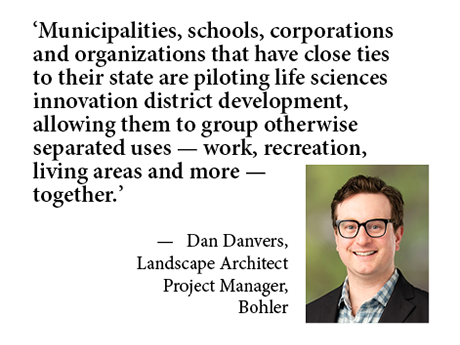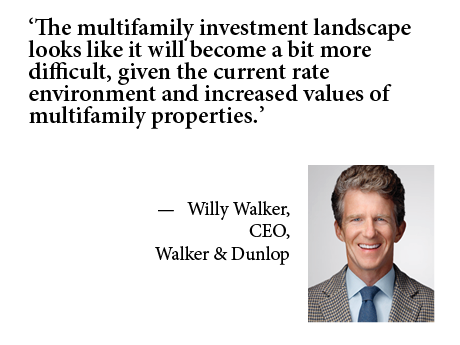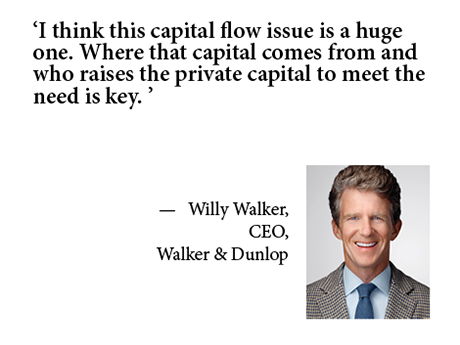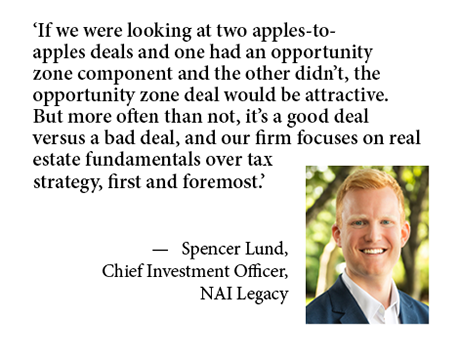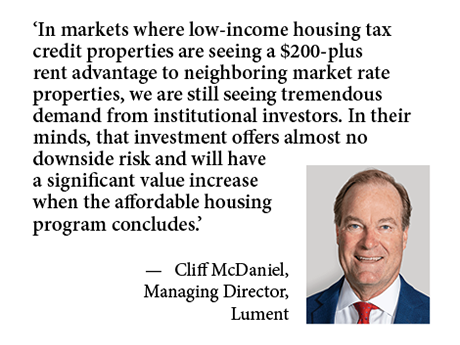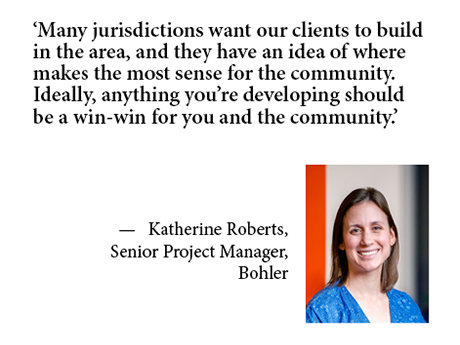A rapidly evolving connectivity frontier is shaping the future of cell tower lease sales and encouraging many commercial property owners who rent space to tower companies to sell their leases at values at the top of the market. Telecom carriers have considerably slowed their buildouts for 5G networks and are already preparing for 6G mobile networks, expected to roll out around 2024. Brokers are seeking to amend and renegotiate old cell tower leases in the face of predicted wireless infrastructure obsolescence and connectivity innovations, which may negate some physical infrastructure needs entirely. The key to maximizing sale proceeds in this landscape is to secure landlord-friendly terms and ensure clarity in a new lease or renewal. Among other elements, building owners must insist on strong insurance indemnities and well-defined subordination, non-disturbance and attornment (SDNA) in the amended agreements. But no landlord demand may be more important to future value than denying the tenant a right of first refusal to purchase the lease, says David Moore, CEO and principal of NAI Global Wireless, a Redlands, California-based national wireless real estate brokerage that represents landlords. Cell tower leases in which tenants don’t have right of first refusal are more appealing to buyers, a …
Content Partner
BohlerContent PartnerDevelopmentFeaturesLife SciencesMidwestMultifamilyNortheastSoutheastTexasWestern
Part 2: How to Promote Collaboration, Efficiency in Life Sciences Innovation Districts Via Design
In the biotech and pharmaceutical sectors, life sciences innovation districts have become hubs not only for research and development but also for cooperation and inspiration between cohorts. These districts, often called innovation districts, collect together companies, research institutions, supporting entities, housing and more. Innovation districts necessitate meticulous planning and design strategies to promote scientific inquiry and efficiency. “Municipalities, schools, corporations and organizations that have close ties to their state are piloting life sciences innovation district development, allowing them to group otherwise separated uses — work, recreation, living areas and more — together. When you pair these institutions and include innovative site and building programming in a single location, you move beyond disconnected projects and amenities to a united innovation district that can magnify benefits across organizations,” explains Dan Danvers, a landscape architect project manager with Bohler, a land development consulting and site design company. This article is the design-focused component of our two-part series on life sciences innovation districts. If you would like to read about the planning component of these complex developments, please read our first article here. Moving Life Sciences Innovation Districts Forward Innovation districts must keep pace with evolving technologies and research. Life sciences industries are continually progressing, …
By Willy Walker, CEO of Walker & Dunlop I recently had the pleasure of sitting down to talk with some prominent members of the Walker & Dunlop team, including Kris Mikkelsen, executive vice president of investment sales, Aaron Appel, senior managing director of capital markets, and Ivy Zelman, executive vice president of research and securities. In this episode of the Walker Webcast, “State of CRE,” we covered some of the most prominent issues the commercial real estate industry is facing, as well as some headwinds it will continue to face in the future. Changes in Homebuilding and Consumer Spending Although homebuilders had to offer incentives when rates first started increasing last year, they are still seeing a steady demand for homes, as demand still heavily outpaces supply. This imbalance is seen in the new and existing home market. Single-family homes in many markets across the country are in multiple offer situations, indicating that single-family residential real estate is still strong. This is incredible, given the fact that many existing homeowners are locked into mortgage rates in the 2-5 percent range, giving them little reason to move out of their current home. How Mortgage Deals Are Currently Financed Although we are …
Life sciences-anchored innovation districts are becoming increasingly popular as hubs for research and development in the biotech and pharmaceutical industries. These districts, also known as “innovation districts,” are characterized by clusters of companies, research institutions, supporting organizations, living areas, amenities and offices all located in close proximity. This grouping requires detailed planning and design strategies to maximize their potential for scientific exploration and success on an enormous, ambitious scale. Master planning and engaging site civil engineering partners early on in the process can save time and money once a project reaches the design stage. This article is the first installment in a two-part series on life sciences innovation districts to discuss, first, the planning, and, then, the design elements required by these districts. Read about design in Part 2, here. Fostering innovation, collaboration and productivity is at the heart of planning for life sciences innovation districts. The successes of famous examples such as North Carolina’s Research Triangle Park, Kendall Square in Cambridge, Mass. and Mission Bay in San Francisco indicate how beneficial a melting-pot mix of residential, commercial and research spaces can be when they concentrate talent from research institutions, life sciences innovators, universities and the surrounding community. “Many life …
Content PartnerDevelopmentFeaturesIndustrialLeasing ActivityLee & AssociatesMidwestMultifamilyNortheastOfficeRetailSoutheastTexasWestern
Lee & Associates’ First-Quarter 2023 Sector-by-Sector Analysis Indicates Market-Wide Cooling
High interest rates and economic uncertainty in the first quarter of this year contributed to lower absorption and declining rent growth in industrial, retail and multifamily sectors across the country, with some regional exceptions, according to Lee & Associates’ 2023 Q1 North America Market Report. Meanwhile office continues to struggle. The sector experienced its third-largest quarterly contraction since the beginning of the pandemic, as work-from-home preferences decoupled office occupancy from job growth numbers. The full Lee & Associates report is available (with further breakdowns of factors like vacancy rates, market rents, inventory square footage and cap rates by city) here. The analysis below provides an overview of four major commercial real estate sectors alongside trends, economic background and exceptions within each sector. Industrial Overview: Sharp Decline Hits First-Quarter U.S. Demand There was a sharp first-quarter decline in U.S. tenant demand for industrial space as wholesalers and retailers reconsider their inventory levels out of caution over the economic outlook. Net absorption in the first quarter totaled 39.4 million square feet, a 57 percent drop from the record set a year ago. The overall U.S. vacancy rate settled at 4.4 percent, an increase of 40 basis points from the close of 2022, comfortably …
On the April 12 episode of “The Most Insightful Hour in CRE” webcast, Willy Walker, CEO of Walker & Dunlop, spoke to renowned economist Dr. Peter Linneman, founding principal of Linneman Associates, about pressing issues facing the economy, pandemic repercussions, market predictions and much more. The discussion began by diving into the economy and real estate market in its current state of flux, with many challenges facing both investors and developers. Walker outlines the unease created by the recent Silicon Valley Bank and Signature Bank crises. “One of the data points announced by the Fed is that since the crisis, bank lending in the United States has gone down by $110 billion over the two weeks since the Silicon Valley Bank collapse. Banks borrowed $160 billion in the two-week window prior. There’s a big drive toward liquidity; and yet there’s no new liquidity going out into the market.” “There’s 4.4 trillion dollars of commercial real estate (CRE) loans outstanding across all lending sources — CMBS, life insurance companies, banks, etc.,” continues Walker. “About half of that is non-multifamily properties. Banks hold about 40 percent of total outstanding loans on commercial properties.” If banks were to pull back from holding 40 percent …
Pavlov Media is accelerating the expansion of its fiber network and fiber-to-the-home initiatives with a key investment from the world’s largest infrastructure investor, Macquarie Asset Management. The funding will help Pavlov Media augment its coverage of student and multifamily housing, developing and broadening resident access to high-speed Internet across a variety of property types. “We are ramping up our growth plans with a combination of building municipal fiber networks in college towns and extending service to underserved areas adjacent to our core markets,” says Glenn Meyer, board member and president of Pavlov Media. “It’s basically more of what we have already been doing but on a larger scale.” Pavlov Media is already the nation’s largest private provider of fiber-based Internet and video services to off-campus student housing, connecting properties in more than 150 U.S. markets and Canada to its national backbone via its own last-mile, municipal fiber networks and third-party circuits. The Champaign, Illinois-based company serves approximately 1,000 multifamily and student buildings encompassing more than 285,000 beds, and in recent years has begun extending fiber to customers in areas adjacent to its core student-housing markets. Now the broadband service provider is poised to quicken the pace of its growth with …
AcquisitionsContent PartnerFeaturesIndustrialMidwestMultifamilyNAINortheastOfficeRetailSoutheastTexasWestern
Tax-Efficient Investment Strategies Open New Opportunities Despite High Interest Rates
The recent Silicon Valley Bank and Signature Bank collapses — and the takeover of First Republic Bank — have revived regulatory scrutiny on bank risk to a degree that is reminiscent of the financial crisis 15 years ago. Suddenly, it seems, everyone is concerned about the trillions of dollars in commercial real estate debt held at banks — and regional and community banks in particular — and whether it can be refinanced at higher interest rates as it matures over the next couple of years. The same holds for hundreds of billions of dollars of commercial mortgage-backed securities. The conditions are exacerbating a pullback in credit that started last year, which, along with the elevated interest rate environment, has depressed commercial real estate investment sales. In February, property sales dropped 51 percent, from $54.9 billion to $26.9 billion from a year earlier, according to MSCI Real Assets. Taken together, the wall of maturities, higher interest rates, bank collapses and a slumping economy have largely spooked the investment market, suggests Spencer Lund, chief investment officer with NAI Legacy in Minneapolis, Minn. (which also serves Chicago, Denver and Scottsdale, Ariz.) Still, it’s also the type of environment that breeds opportunity as prices …
AcquisitionsAffordable HousingContent PartnerFeaturesLumentMidwestNortheastSoutheastTexasVideoWestern
Higher Interest Rates Cause Affordable Housing Values to Return to Old Norms
Rising interest rates dinging commercial real estate and multifamily assets have plunged low-income housing tax credit (LIHTC) properties back into reality, especially those coming to the end of their 15-year compliance periods. “There were some huge profits made in the affordable housing space over the last two or three years,” says Cliff McDaniel, a managing director with Lument, which is representing Harmony Housing in the $1.4 billion sale of its affordable housing portfolio to the Michaels Organization. “We sold a lot of properties for $60,000 a unit or even $120,000 a unit, and the debt was $40,000 a unit. But the mania over that type of profitability is over, and values are going back to where they were before.” Up until about five years ago, the phrase “huge profits” and “affordable housing” would rarely if ever have occurred in the same sentence. Or even in the same story. Prior to that, affordable housing properties typically had very little value at the end of their initial 15-year compliance periods, and limited partners who provided equity to the project by buying tax credits routinely agreed to sell their interest to the general partner for a nominal fee. At that point, the …
As vacant sites become rare and cost-prohibitive, commercial real estate developers need to be creative when it comes to bringing a new project out of the ground. Unconventional development sites offer cost savings and location advantages, and in-depth due diligence and creativity on the part of developers can make for sites that can allow an elegant union of lower costs and strategy. With limited room for delay, how can developers think critically about available sites and leverage existing conditions to their advantage? Katherine Roberts, senior project manager at Bohler’s Warrenton, VA office, and Gregory Roth, principal at Bohler’s Tampa office, offer their expert advice on threading this needle. Bohler specializes in land development, especially making development work when conventional sites aren’t an option. Prioritizing Development Needs When Assessing Red Flags Certain project factors can be red flags if time or cost are obstacles to a developer, including These points of concern are usually knots that can be untangled if a developer has the time, money and appetite to move forward in spite of these interruptions, but each factor does bear watching. “Developers should understand where their limits are and where they’re willing to negotiate. Ideally, anything you’re developing should be …



